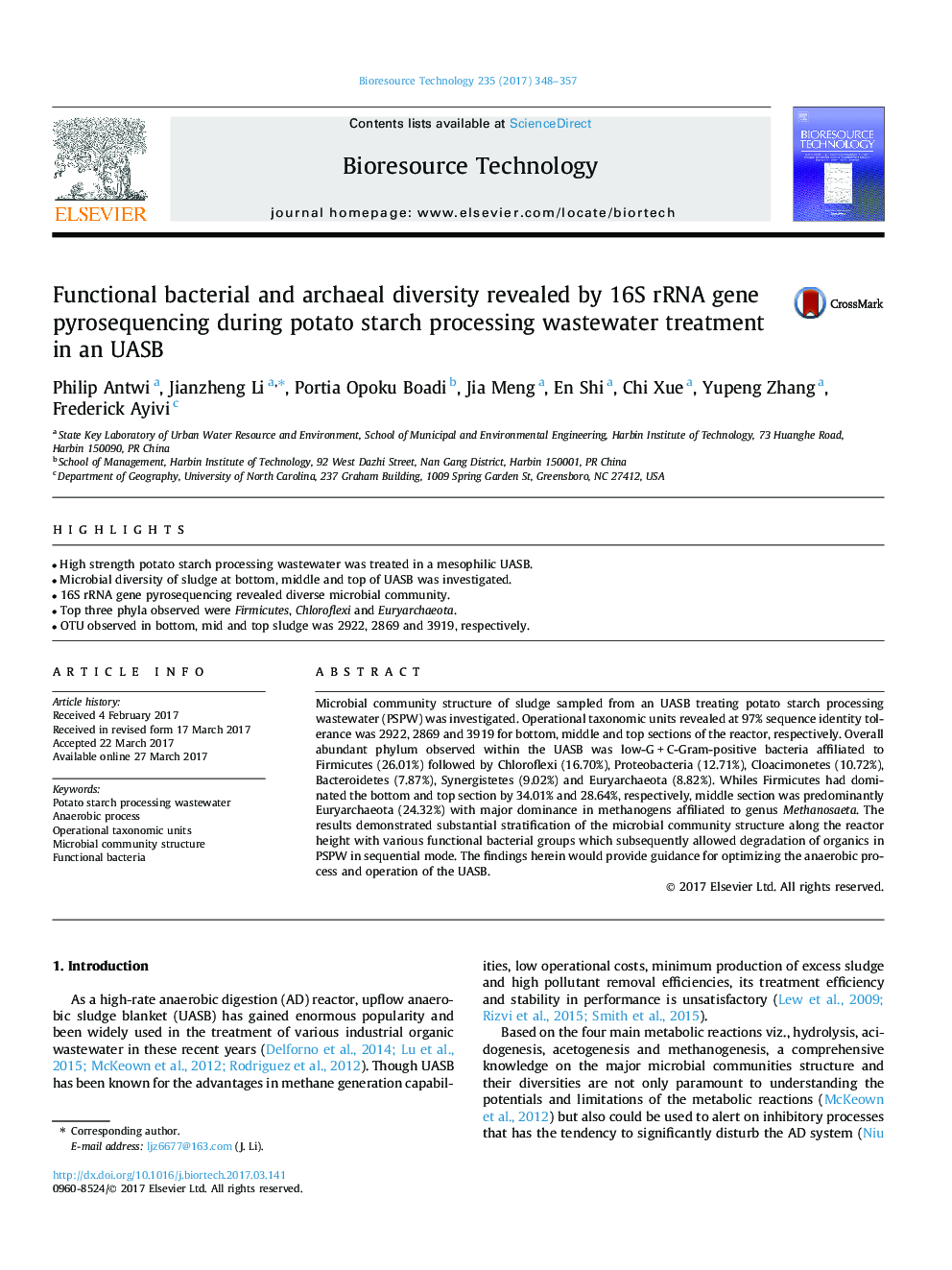| Article ID | Journal | Published Year | Pages | File Type |
|---|---|---|---|---|
| 4997366 | Bioresource Technology | 2017 | 10 Pages |
â¢High strength potato starch processing wastewater was treated in a mesophilic UASB.â¢Microbial diversity of sludge at bottom, middle and top of UASB was investigated.â¢16S rRNA gene pyrosequencing revealed diverse microbial community.â¢Top three phyla observed were Firmicutes, Chloroflexi and Euryarchaeota.â¢OTU observed in bottom, mid and top sludge was 2922, 2869 and 3919, respectively.
Microbial community structure of sludge sampled from an UASB treating potato starch processing wastewater (PSPW) was investigated. Operational taxonomic units revealed at 97% sequence identity tolerance was 2922, 2869 and 3919 for bottom, middle and top sections of the reactor, respectively. Overall abundant phylum observed within the UASB was low-GÂ +Â C-Gram-positive bacteria affiliated to Firmicutes (26.01%) followed by Chloroflexi (16.70%), Proteobacteria (12.71%), Cloacimonetes (10.72%), Bacteroidetes (7.87%), Synergistetes (9.02%) and Euryarchaeota (8.82%). Whiles Firmicutes had dominated the bottom and top section by 34.01% and 28.64%, respectively, middle section was predominantly Euryarchaeota (24.32%) with major dominance in methanogens affiliated to genus Methanosaeta. The results demonstrated substantial stratification of the microbial community structure along the reactor height with various functional bacterial groups which subsequently allowed degradation of organics in PSPW in sequential mode. The findings herein would provide guidance for optimizing the anaerobic process and operation of the UASB.
